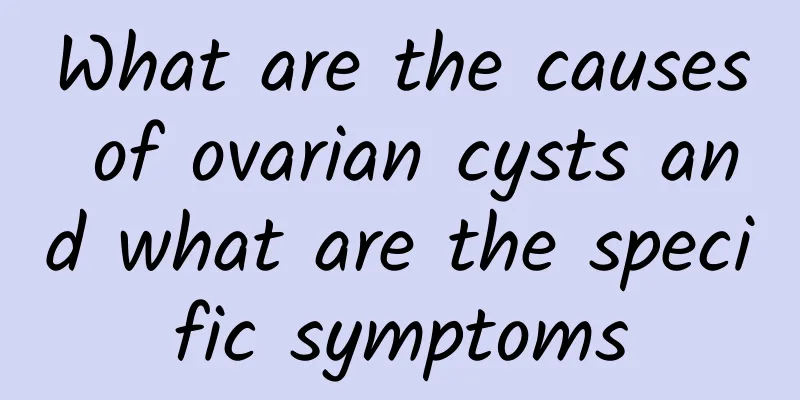What are the causes of ovarian cysts and what are the specific symptoms

|
The ovaries are relatively small organs in the human body, but they are the most common sites for various tumors. Ovarian tumors can have various properties and forms: single or mixed, unilateral or bilateral, cystic or solid, benign or malignant, and many ovarian tumors can produce female or male sex hormones. So, what are the causes of ovarian cysts and what are the specific symptoms? There are many reasons for the formation of ovarian cysts, the most common ones are the following three: 1. Environmental factors. Unreasonable dietary structure, high cholesterol diet, vitamin A, C, E deficiency, smoking, ionizing radiation and other environmental factors are related to the occurrence of ovarian cysts; 2. Endocrine factors. The incidence rate of nulliparous or childless women increases; early menarche before the age of 12, menopause after the age of 50, frequent menstruation, use of ovulation-inducing agents for more than 3 cycles, precocious puberty or virilization are also related to the occurrence of ovarian cysts; 3. Bad living habits. Bad living habits, excessive psychological pressure and other factors cause excessive acidification of the body, which reduces the overall function of the human body, causing kidney deficiency, which in turn causes the metabolic cycle in the lower part of the body to slow down, causing endocrine disorders, decreased immune function, and ultimately leading to ovarian cysts; Clinically, ovarian cysts often present with lower abdominal pain, lower abdominal discomfort, increased leucorrhea, yellow leucorrhea, leucorrhea odor, and menstrual irregularities. There is usually a solid and painless mass in the lower abdomen, and sometimes pain during sexual intercourse. When the cyst affects hormone secretion, symptoms such as irregular vaginal bleeding or increased hair growth may occur. If the cyst pedicle is twisted, there will be severe abdominal pain, bloating, difficulty breathing, decreased appetite, nausea, and fever. Larger cysts will cause pressure near the bladder, causing frequent urination and difficulty urinating. Especially when these symptoms are more severe, bleeding is frequent, and they occur at the same time, women are more likely to suffer from ovarian cysts, and the harm of malignant ovarian cancer is greater. |
<<: How to diagnose pelvic inflammatory disease
>>: Dietary guidance for cervical precancerous lesions
Recommend
How does Western medicine treat menopausal functional uterine bleeding?
Menopausal uterine bleeding is a common gynecolog...
What are the abortion pills and what are the dangers of abortion pills?
There are always some girls who fail to protect t...
Is medical abortion better or painless abortion better?
Medical abortion, also known as medical abortion,...
What are the common treatments for adnexitis?
What are the main common treatments for adnexitis...
Eat less of the five types of plump autumn crabs
Recently, we can see promotional advertisements s...
How to treat cervical erosion cyst? Several best treatments for cervical erosion cyst
When women grow up, they will go through a series...
Where does an ovarian cyst usually hurt?
The pain location of ovarian cysts may vary depen...
How to treat premenstrual migraines?
How to treat premenstrual migraines? Premenstrual...
What are the consequences of uterine fluid accumulation?
What are the hazards of uterine effusion? This is...
These early symptoms of ectopic pregnancy should be understood in time
These early symptoms of ectopic pregnancy should ...
Is chocolate cyst serious?
Are chocolate cysts serious? Under normal circums...
What to do with uterine fibroids during pregnancy? Can uterine fibroids smaller than 6 cm be left untreated during pregnancy?
When uterine fibroids occur in pregnant women, th...
Does amenorrhea affect red blood cells?
Amenorrhea will have a certain impact on red bloo...
Symptoms of uterine fibroids can be identified through self-examination
The symptoms of uterine fibroids can be identifie...
The higher the BMI of obese people, the higher the relative mortality rate! A 163kg fat man reduced his stomach size and lost 75kg in one year to save his life
Mr. Huang, 36 years old, from Kaohsiung City is a...









